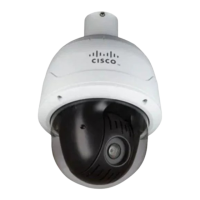3
Using the ROM Monitor
OL-5997-02
How to Use the ROM Monitor—Typical Tasks
–
TFTP download (tftpdnld)—Use this method if you can connect a TFTP server directly to the
fixed LAN port on your router. See the “Recovering the System Image (tftpdnld)” section on
page 20.
Note
Recovering the system image is different from upgrading the system image. You need to
recover the system image if it becomes corrupt or if it is deleted because of a disaster that
affects the memory device severely enough to require deleting all data on the memory device
in order to load a system image.
Tips for Using ROM Monitor Commands
•
ROM monitor commands are case sensitive.
•
You can halt any ROM monitor command by entering the Break key sequence (Ctrl-Break) on the
PC or terminal. The Break key sequence varies, depending on the software on your PC or terminal.
If Ctrl-Break does not work, see the
Standard Break Key Sequence Combinations During Password
Recovery tech note.
•
To find out which commands are available on your router and to display command syntax options,
see the
“Displaying Commands and Command Syntax in ROM Monitor Mode (?, help, -?)” section
on page 8.
Accessibility
This product can be configured using the Cisco command-line interface (CLI). The CLI conforms to
accessibility code 508 because it is text based and because it relies on a keyboard for navigation. All
functions of the router can be configured and monitored through the CLI.
For a complete list of guidelines and Cisco products adherence to accessibility, see Cisco Accessibility
Products at the following URL:
http://www.cisco.com/web/about/responsibility/accessibility/products
How to Use the ROM Monitor—Typical Tasks
This section provides the following procedures:
•
Entering ROM Monitor Mode, page 5
•
Displaying Commands and Command Syntax in ROM Monitor Mode (?, help, -?), page 8
•
Displaying Files in a File System (dir), page 10
•
Loading a System Image (boot), page 10
•
Downloading Files over the Router Console Port (xmodem), page 15
•
Modifying the Configuration Register (confreg), page 16
•
Obtaining Information on USB Flash Devices, page 18
•
Modifying the I/O Memory (iomemset), page 19
•
Recovering the System Image (tftpdnld), page 20
•
Troubleshooting Crashes and Hangs (stack, context, frame, sysret, meminfo), page 24

